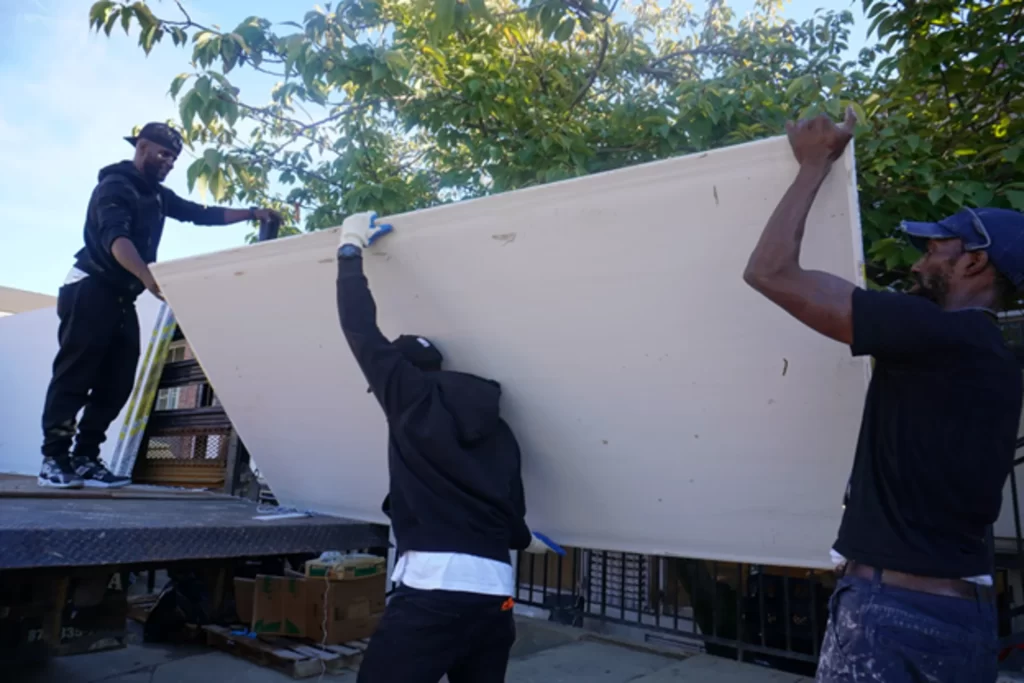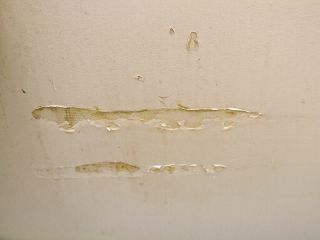Explore stunning makeovers done with Drywall Repair Ogden UT and innovative painting work.
Necessary Tips for Effective Drywall Repair and Setup Techniques
Reliable drywall fixing and installation requires a careful technique. Comprehending the types of drywall and having the right tools is crucial. Accurate measurements and appropriate strategies can significantly influence the end result. Lots of ignore necessary steps like taping and sanding, which can make or damage the last appearance. As projects progress, common challenges might occur that need focus. Discovering these ideas can lead to a more effective and polished finish.
Understanding Various Sorts Of Drywall
Comprehending the various types of drywall is essential for any successful repair or installment task. Drywall, frequently recognized as plaster board, can be found in a number of ranges customized for details applications. Standard drywall is one of the most commonly used type, perfect for basic interior wall surfaces and ceilings. Moisture-resistant drywall, typically environment-friendly in color, is created for locations susceptible to moisture, such as washrooms and kitchen areas. Fire-resistant drywall, typically tinted pink or purple, is crafted to endure higher temperatures and is often made use of in garages or near heating systems. Additionally, soundproof drywall helps in reducing noise transmission, making it suitable for multi-family homes or recording workshops. Specialty drywall, like cement board, is used in wet areas like showers or bathtub borders. Recognizing these kinds helps in choosing the appropriate product for each and every project, making certain durability and efficiency in repair work or brand-new installments.
Crucial Tools for Drywall Repair Service and Installment
Having the right tools is vital for reliable drywall repair work and installment. A quality energy blade is crucial for reducing drywall sheets specifically. A drywall T-square aids guarantee straight edges, while a taping blade is required for using joint substance efficiently over seams. Additionally, a drywall saw enables eliminating damaged sections or fitting drywall around components.
For hanging drywall, a power drill with drywall screws is essential, as it enables fast and safe installment. A degree is likewise essential to validate that the drywall is straight and correctly straightened. Once it has actually dried out, a fining sand block or pole sander is vital for smoothing out joint compound. A measuring tape is critical for exact measurements, avoiding waste and making certain a proper fit. Equipped with these tools, people can deal with drywall tasks effectively, causing professional-looking outcomes.
Step-by-Step Guide to Repairing Holes and Cracks
When dealing with holes and cracks in drywall, having the right tools and materials is crucial for a successful repair work. This guide outlines the required products and gives a clear, detailed procedure to successfully bring back the surface area. Comprehending these elements will certainly help assure a seamless surface and lasting outcomes.
Tools and Materials Needed
A well-equipped toolkit is important for reliable drywall repair work and setup. Secret tools include an energy knife for reducing drywall, a tape procedure to assure precise sizing, and a drywall saw for larger openings. A putty blade is vital for using joint compound efficiently, while a sanding block or post sander aids achieve a seamless finish. For patching, a roll of fiberglass fit together tape or paper tape is needed to reinforce joints. Additionally, a drill and screws are needed for protecting brand-new drywall items. Essential materials include joint substance, guide, and paint to complete the fixing. Having these devices and materials available assures a smoother, much more reliable repair service procedure, yielding professional-looking outcomes.
Repair Work Process Actions
Repairing holes and cracks in drywall calls for a systematic method to assure a smooth finish. Initially, the location surrounding the damage should be cleaned extensively to remove dust and debris. Next off, for tiny splits, a putty blade is utilized to use a joint compound equally over the location. For bigger holes, a spot is essential; the damaged area is reduced out, and a new item of drywall is suited place, safeguarded with screws. As soon as the patch is in position, joint compound is related to mix the sides. After drying out, sanding the area smooth is vital. The repaired surface ought to be topped and painted to match the bordering wall, making sure an inconspicuous repair service.
Strategies for Setting Up Drywall Panels
Mounting drywall panels requires mindful preparation and precise implementation to assure a expert and smooth finish. Initially, it is necessary to gauge the wall surface room precisely and reduce the panels to fit, making sure that they straighten with the studs. Placing the panels flat is normally recommended, as this can improve the structural stability and lower the number of joints.
Utilizing drywall screws, installers ought to protect the panels every 16 inches along the studs, guaranteeing a firm hold. It is important to prevent overdriving the screws, which can damage the paper surface area. For sides and edges, making visit here use of an utility blade allows for tidy cuts and a snug fit.

Finishing Touches: Taping, Mudding, and Fining sand
When the drywall panels are firmly in place, the following important step includes the complements of taping, mudding, and sanding. Insulation is essential for producing a seamless shift between panels and hiding joints. A quality drywall tape, either paper or fiberglass mesh, must be used over the joints, guaranteeing it adheres correctly to the mud that will certainly be used next.
Mudding, or applying joint compound, adheres to the taping procedure. This compound loads gaps see this website and smooths out the surface. A very first layer ought to be applied generously, feathering the edges to blend with the drywall. After the preliminary layer dries, succeeding layers might be needed for a perfect coating.
Finally, fining sand is needed to accomplish a smooth surface area. A fine-grit sandpaper ought to be made use of to delicately ravel any type of imperfections. Care should be taken to prevent over-sanding, which can damage the drywall - Interior Painting. Correctly executed, these completing touches produce a specialist appearance prepared for painting
Tips for Maintaining Your Drywall After Installation
Keeping drywall after installation is important to preserving its appearance and architectural stability. Normal cleansing is necessary; dust and dust can collect, so gentle cleaning with a wet cloth is advised. Home owners need to also check for any signs of moisture or mold, especially in high-humidity areas like shower rooms and kitchen areas. If any type of damage occurs, it is essential to address it promptly to stop further concerns.
Utilizing furniture pads can help protect against scrapes or damages from heavy items. In addition, repainting the drywall with a premium, washable paint supplies an additional layer of defense and makes future cleaning less complicated. Prevent using rough cleansers or tools, as these can harm the surface. Preserving a secure interior environment with ideal humidity degrees will assist protect against cracking or deforming over time. By following these suggestions, one can ensure that drywall remains in excellent problem for years to come.
Often Asked Questions
How Lengthy Does Drywall Take to Totally Dry After Installment?

Can I Install Drywall Over Existing Drywall?
Yes, drywall can be set up over existing drywall, but it is vital to assure the underlying surface area is secure and adequately prepared. This method can enhance insulation and reduce setup time, though it might add weight.
What Is the most effective Method to Soundproof Drywall?
The most effective way to soundproof drywall involves making use of specialized soundproofing products, such as durable channels, acoustic caulk, and sound-dampening drywall. These methods effectively decrease sound transmission in between spaces, boosting general acoustic efficiency in living rooms.
How Do I Choose the Right Drywall Thickness?
To pick the ideal drywall density, consider the application and location. Standard household wall surfaces normally make use of 1/2 inch, while ceilings or specialized locations may require 5/8 inch for additional stamina and soundproofing capabilities.
Exist Eco-Friendly Drywall Options Available?
Yes, environment-friendly drywall choices are available. These include items made from recycled materials, gypsum boards with low volatile natural compounds (VOCs), and those using lasting manufacturing procedures, providing environmentally-conscious options for building and construction and remodelling jobs.
Having the right devices is essential for efficient drywall repair and installment. For hanging drywall, a power drill with drywall screws is vital, as it enables safe and quick setup. Secret tools consist official website of an utility knife for reducing drywall, a tape procedure to assure accurate sizing, and a drywall saw for bigger openings. Yes, drywall can be set up over existing drywall, however it is important to guarantee the underlying surface area is secure and effectively prepared. The finest way to soundproof drywall involves using specialized soundproofing materials, such as resistant networks, acoustic caulk, and sound-dampening drywall.